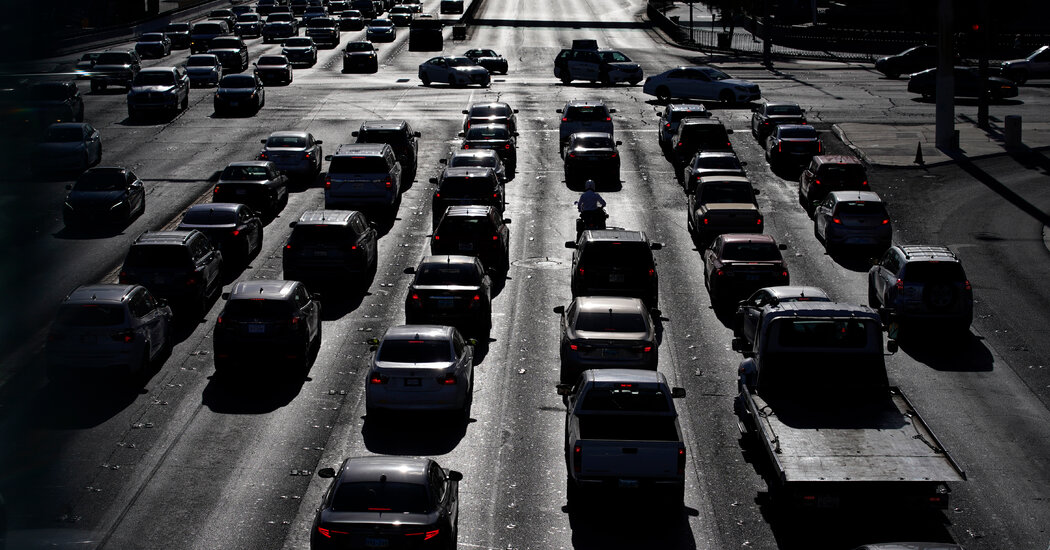This week The Upshot published an article trying to unpack a mystery happening on American roadways: Why have a rising number of pedestrians been dying at night? A similar pattern hasn’t appeared in peer countries, and so the answer has to be particular to the U.S. The trend also started around 2009, and so the answer must fit that timeline.
Spoiler alert if you haven’t read the story yet: We don’t have a definitive answer. But we dug into many possible culprits, from the rise of smartphones to the suburbanization of poverty, and we suspect that many of them are probably interacting with one another.
Readers responded with some of their own ideas. Several brought up cataracts. One reader pointed to the rise of distracting podcasts (they did take off after 2009!). And, boy, a lot of you testified about your personal difficulty seeing the road with oncoming LED headlights. Here, we’ll consider some of these additional theories.
LED headlights
Far and away, the most common issue raised by readers was the concern that brighter LED headlights — while meant to help drivers — can also be blinding for oncoming cars or pedestrians.
It’s true that headlights have changed, becoming brighter (and illuminating longer distances). LED headlights, first introduced in the 2000s, come standard in a majority of cars sold today. But several researchers told us they believe headlights are actually becoming safer with time.
“We have seen some changes in technology that we think would be for the better,” said Jessica Cicchino, the vice president for research with the Insurance Institute for Highway Safety.
In 2016, the I.I.H.S. began rating headlights for safety, considering how they illuminate roads but also the glare they produce. Since then, headlight ratings for newer cars have generally gotten better. And research conducted by the group has found that vehicles with better headlight ratings have lower crash rates, including for crashes involving pedestrians.
Still, European countries have had more advanced, “adaptive” headlights for more than a decade, and they only became legal in the U.S. last year. Such headlights sense and respond to different conditions, like a bend in the road or an oncoming car. But it will take years for this technology to come to market in the U.S. and be present on most cars on American roads.
So headlights matter. But they’re perhaps not a major contributor to the rise in deaths.
“Headlighting, we think, is a really important thing in this whole puzzle,” Michael Flannagan, a retired professor at the University of Michigan’s Transportation Research Institute, told us. “How it fits in — I don’t know. It does not seem like the answer to the things you’re looking for.”
If headlights were causing substantial visibility problems for drivers, the night would have become more dangerous for people inside cars, too. That hasn’t been the case. In 2009, 47 percent of fatalities among vehicle drivers and passengers occurred at night. The share in 2021: also 47 percent.
Streetlight design
Many readers asked if changes in streetlights could be to blame — the conversion to LED streetlights or poor streetlight design.
As with headlights, LED streetlights became popular in the 2010s, especially with cities trying to reduce energy costs. While in 2012 about 10 percent of streetlights were LEDs, now more than half are.
LED streetlights are sometimes blamed for causing glare (a complaint leveled against older non-LED streetlights as well). Readers also commented that brighter LED lighting may cause drivers to go faster as the lighting gives them a false sense of security.
But the switch to LED streetlights is not unique to the United States. Britain and Canada have made the same conversion, at least as quickly. And those countries have not seen the same increase in nighttime deaths.
Various researchers we interviewed were skeptical that changes in street design or placement of street lighting could have this noticeable of an impact so fast, simply because the percentage of roadways, intersections or lights that have their design altered each year is low.
That doesn’t mean that poor streetlight design has no role in the worsening situation. As we mentioned in our article, more people have moved to places (such as Sun Belt metro areas) with particularly poor pedestrian infrastructure. In this sense, more pedestrians than before may find themselves in situations with unsafe lighting conditions, even if the design of the roads themselves has not drastically changed in the last decade.
Aging Americans
One inescapable fact is that the road fatality trend — as with just about every other trend in America right now — is happening amid an aging population. Readers wondered how this might be relevant, particularly with a growing cohort that has poorer eyesight (and more cataracts).
As pedestrians, older people are more likely to die when they’re struck by a car, and so we originally expected we might see fatalities rising in particular for this group. But that’s not the case. As noted in our original article, the rise in pedestrian deaths since 2009 has occurred primarily among those 18 to 64.
What about older Americans as drivers? Federal data on the driver’s age in fatal accidents doesn’t account for a few situations (hit and runs, for example). But it is safe to say that older drivers are more likely to strike and kill pedestrians than younger drivers. In 2009, Americans 65 and older made up 13 percent of the population but were 19 percent of the drivers in fatal pedestrian crashes. This group of older Americans has now risen to a 17 percent share of the population and is behind the wheel in 24 percent of crashes where a pedestrian is killed.
Unlike in many comparably wealthy countries, aging Americans also have fewer alternatives to driving like public transit, said Greg Shill, a University of Iowa law professor: “If you’re aging in Japan, which is a much older society than the U.S., that has much different implications.”
Roughly extrapolated, the aging of the U.S. population may be responsible for an increase of several percentage points in pedestrian fatalities. But that’s small compared with the total rise in deaths. Just to look at another group, the total number of pedestrians killed by drivers 20 to 39 has increased 80 percent since 2009 despite the fact that this age group increased in population by just 1 percent overall.
Dwindling safety with dwindling numbers
There’s a common expression, “safety in numbers,” used by biking advocates to argue that roads become safer for cyclists as more people bike, because drivers learn to share the road with them. A similar idea may apply to pedestrians.
Kea Wilson at Streetsblog, writing in response to our article, said fewer Americans have been walking, making the roads more dangerous for the pedestrians who remain. We have much better data counting cars in America than counting walkers. But the data that does exist, as Ms. Wilson outlines, suggests that the ranks of pedestrians have indeed fallen in recent years, possibly eroding societal norms that help keep them safe.
Times have changed for pedestrians
A number of readers also suggested that underlying cultural expectations had changed, particularly for pedestrians.
Readers recalled that as children they were taught by parents and public service announcements to walk against traffic rather than with it; to wear light-colored clothing at night; to look both ways before crossing the street. And they lamented that such messages (and behaviors) are less ingrained now.
We confess to having no data to test these theories. But transportation researchers and planners generally say that it would be more effective to design roads for safety than to design public education campaigns about how to avoid being hit.



